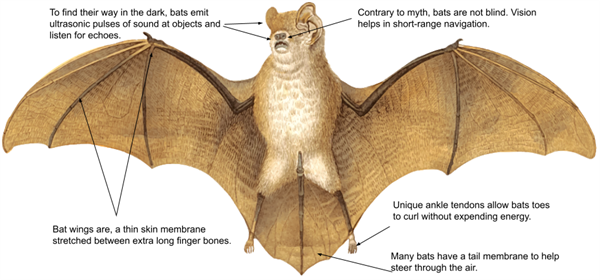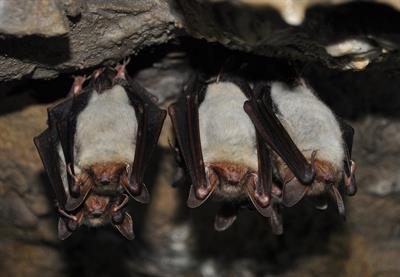
PUMPA - SMART LEARNING
எங்கள் ஆசிரியர்களுடன் 1-ஆன்-1 ஆலோசனை நேரத்தைப் பெறுங்கள். டாப்பர் ஆவதற்கு நாங்கள் பயிற்சி அளிப்போம்
Book Free DemoAnimals, too, adapt according to their habitat. Temperature and light influence the activities such as growth, metabolism, reproduction, behaviour, movement and distribution. Animals develop special features or patterns to escape from the extreme conditions of light and temperature.
The adaptive features present in bats and earthworms are studied in detail.
Adaptations of the bat:
Bats are the only mammals that are capable of flight. Flying squirrels can only glide for short distances, but the bats are capable of true flight. Most bats live in caves. Apart from caves, bats can live in trees, hollowed logs, on the underside of bridges and in the crevices of rocks.
Bats are essential to humans as they reduce the insect population present and help pollinate plants. Various adaptations present in bat are explained below:

Adaptations present in bats
Nocturnality:
Bats are active at night, which is a necessary and helpful adaptation, as flight requires a much energy during the day.

Bats are nocturnal
The bat's wings are formed by a thin membrane that stretches across the arms, elongated fingers, along the body to form an umbrella-like structure called a patagium. They are extensions of the mammalian arms with double layers of skin that join the bones of the fingers. Bats have a thin and black wing membrane called a patagium that causes excessive absorption of the sun's rays during the day.
There is thus overheating if bats are out during the day. Bats have a low tolerance to heat, leading to dehydration.
Important!
Another hypothesis is that the birds have pushed the bats to become nocturnal. This is due to the competition from the birds that pressured the mammal to leave the daylight.
Reference:
https://pixabay.com/de/photos/tiere-schl%c3%a4ger-nachtaktive-tiere-4626791/
https://freesvg.org/brown-bat